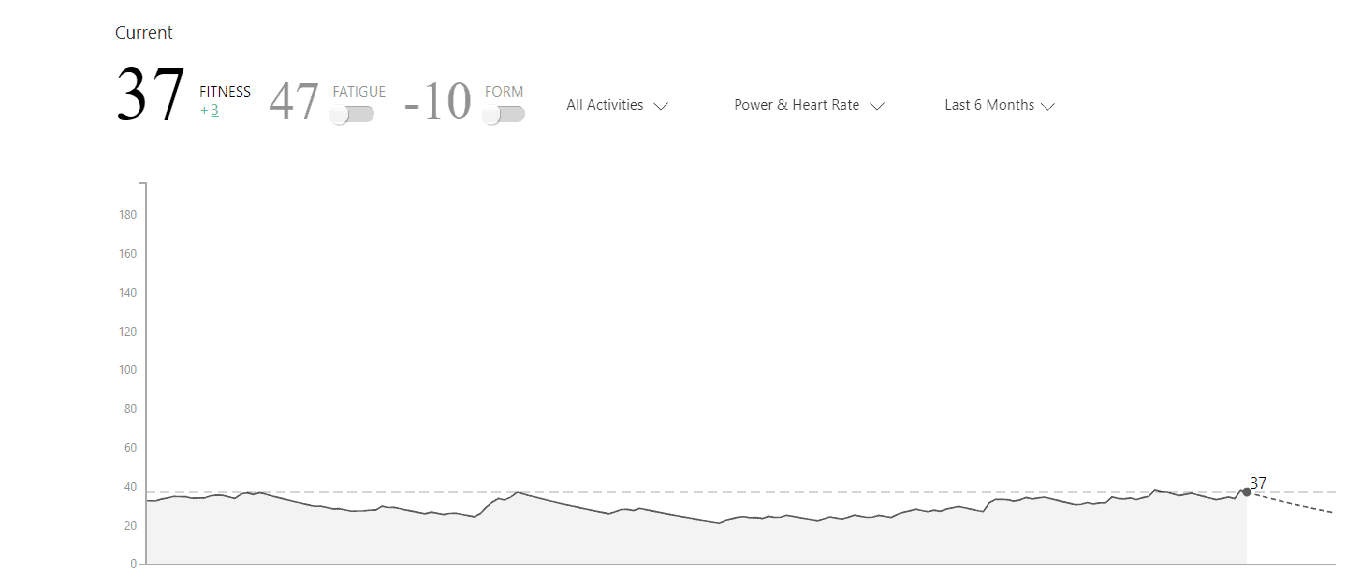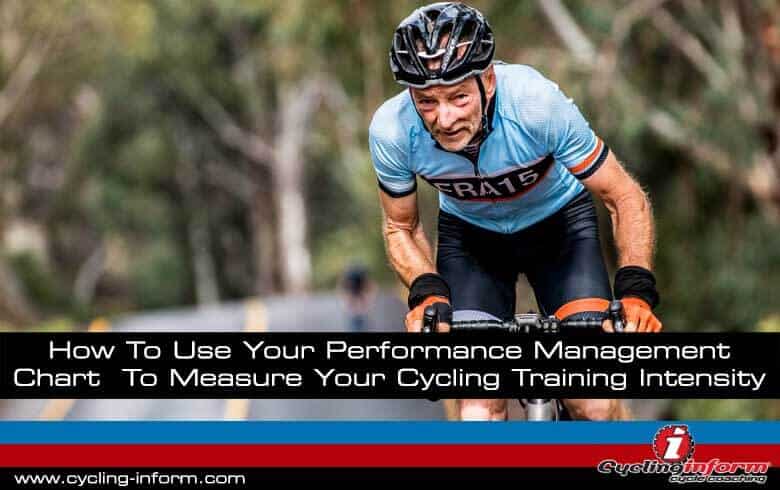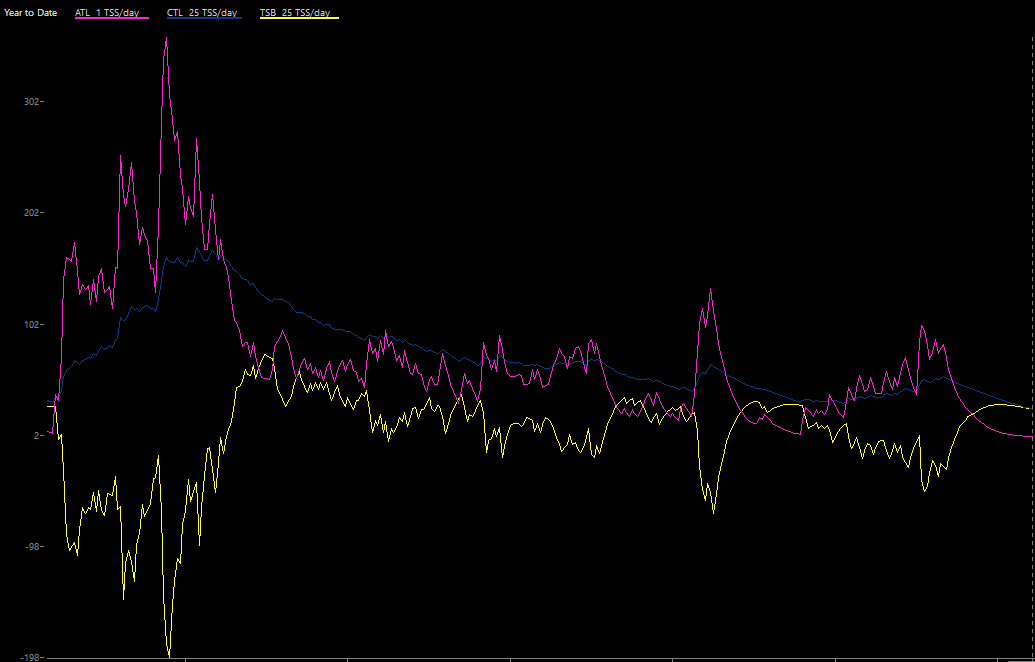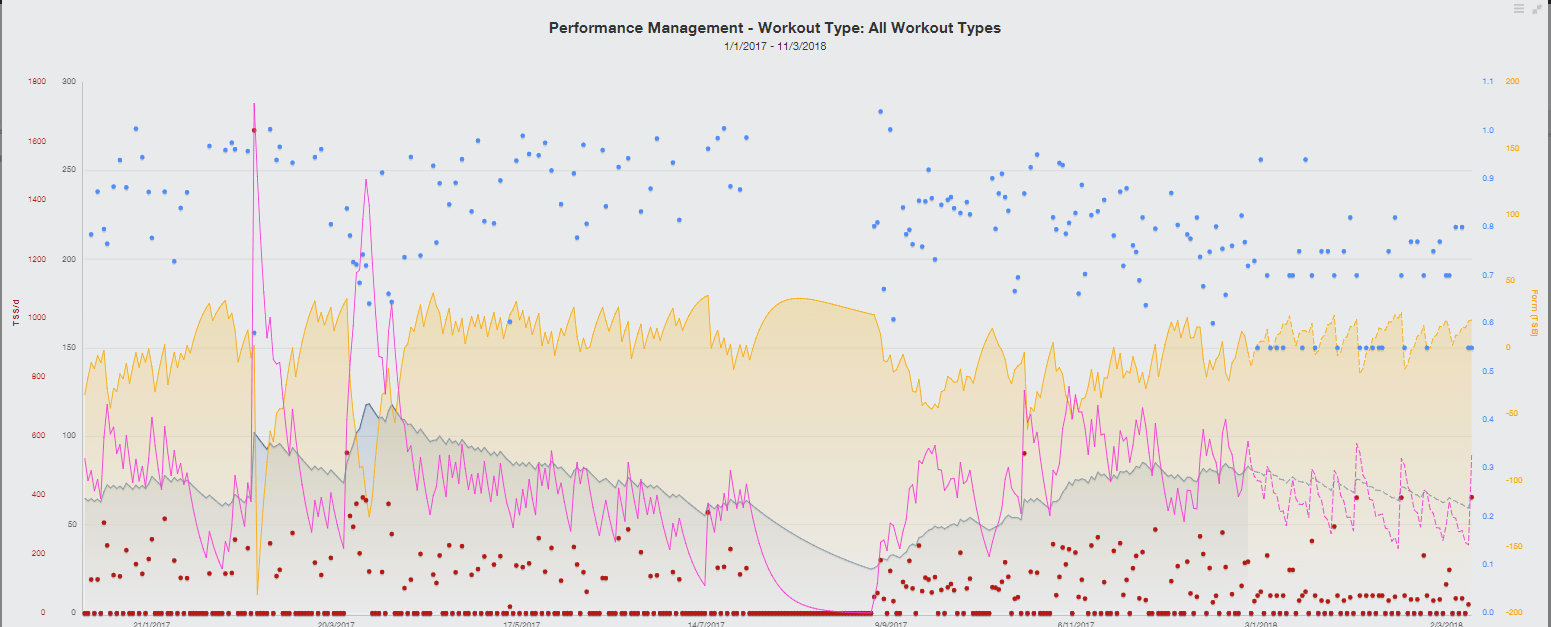While many cyclists believe that it’s down to doing single killer indoor training sessions that improves their performance, it’s actually not the case. It’s more got to do with a balanced, structured and progressive training load with active recovery.
This is what makes the biggest difference to your cycling performance.
If you feel like you have plateaued with your training or just not getting the results from the training you are doing then I recommend that you have a look at your performance management chart.
This article discusses the performance management chart and how to use it to improve your overall training load and make your training more efficient. It’s your guide to building intensity with a power meter or heart rate monitor so that you can improve you cycling fitness.
A few years ago the performance management chart was only available to cyclists that had a power meter because it was based on the TSS figure generated from these power meters for each ride the cyclist did. But, in recent times hrTSS has become available which means that the performances management chart can be generated from riding on heart rate as well.
Training Peaks WKO4 Performance Management chart
 Here is the performance management chart “fitness and freshness” generated from Strava
Here is the performance management chart “fitness and freshness” generated from Strava
Training Peaks Performance Management Chart
There is a lot of information in this chart and it’s all based on the Training Stress Score (TSS) for each ride.
The blue line represents Chronic Training Load (CTL) and consequentially, an indicator of overall fitness. The intent is to get this as high a possible prior to an event without burning out the athlete. A number between 70 and 120 is targeted for most of the athletes that I work with.
The purple line represents training load ride by ride, known as ATL or Acute Training Load. This tracked the TSS score for each ride.
The yellow line represents the Training Balance Score (TBS) which is sometimes known as form. I monitor this one closely with my athletes to ensure that it doesn’t go too negative, an indication that they are training too hard. I also use it to manage training load leading up to an event to ensure that it starts going positive as they taper.
No five minute wonder exercise once a week here. This all indicates that you need training that progressively builds over many weeks to improve your fitness. Without it, your fitness is either going to stay the same or go backwards.
Both power meters and heart rate monitors are great tools. But, having a heart rate monitor or a power meter won’t make you a better cyclist unless you know how to use it effectively. The great thing is the performance management chart provides great insight into your overall training load and is a powerful tool that you can use to manage your training load and recovery.








Leave A Comment